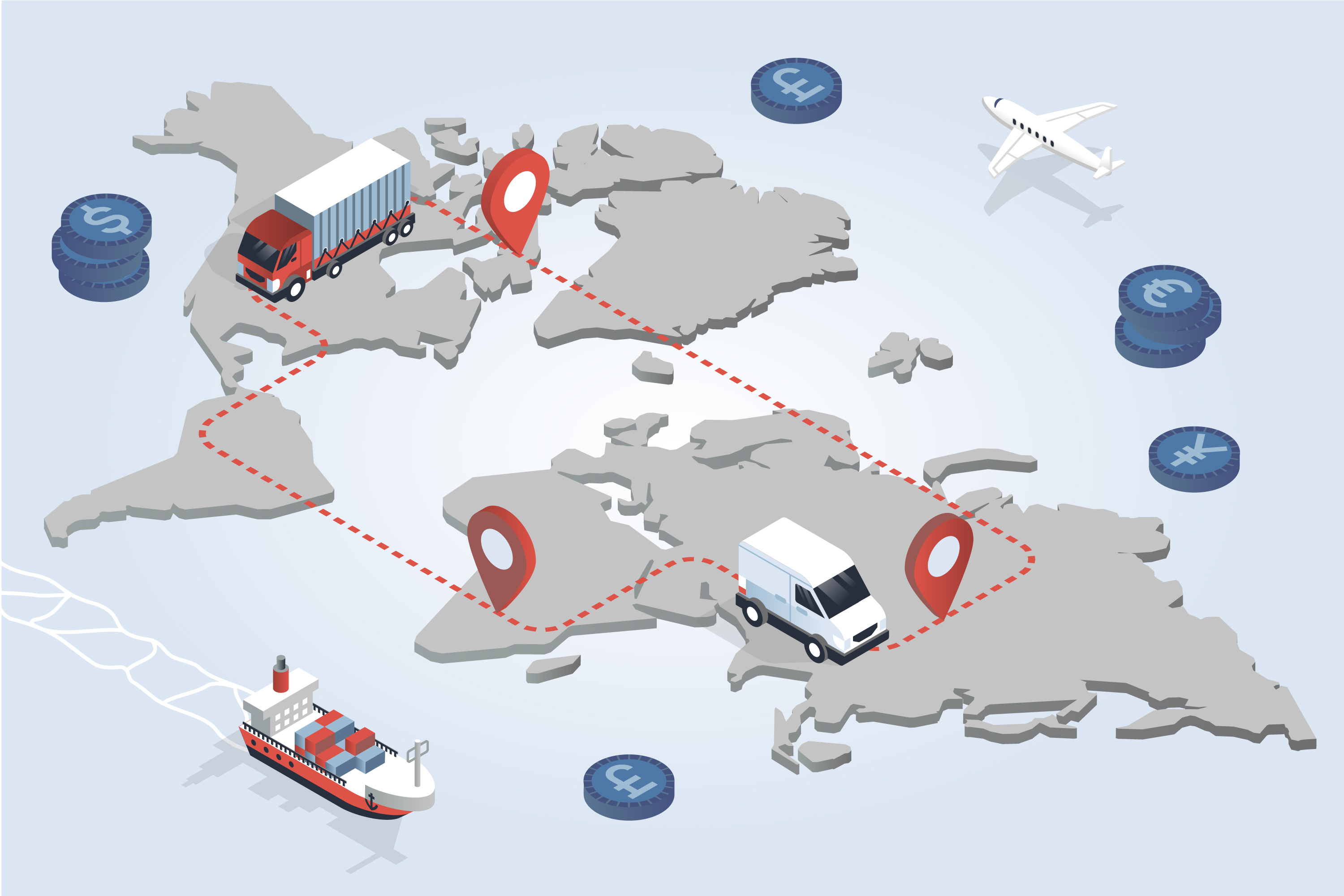How Logistics Companies Can Navigate Supply Chain Disruptions

Strong 8k brings an ultra-HD IPTV experience to your living room and your pocket.
In today's interconnected global economy, supply chain disruptions have become increasingly common. From natural disasters to geopolitical tensions, from pandemic-related lockdowns to labor shortages – logistics companies face unprecedented challenges in maintaining operational continuity. As a logistics company manager or owner, your ability to navigate these disruptions can make the difference between business failure and success.
Understanding the New Normal in Supply Chains
Supply chain disruptions are no longer exceptional events – they've become part of the operational landscape. The COVID-19 pandemic exposed vulnerabilities that many logistics professionals had overlooked. Container shortages, port congestion, and manufacturing delays created a domino effect across global supply networks. Even as pandemic-related issues have eased, new challenges continue to emerge.
Climate events increasingly threaten logistics infrastructure. Flooding in key manufacturing regions, hurricanes affecting major ports, and wildfires disrupting transportation routes all create unpredictable bottlenecks. Meanwhile, geopolitical tensions introduce tariffs, trade restrictions, and regional conflicts that can suddenly cut off established supply lines.
For any logistics company hoping to thrive in this environment, adaptation isn't optional – it's essential.
Building Resilience Through Diversification
One of the most effective strategies for navigating supply chain disruptions is diversification. The best logistics company leaders understand that relying on a single supplier, shipping route, or transportation method creates dangerous vulnerability.
Consider diversifying in these key areas:
Supplier networks: Develop relationships with multiple suppliers in different geographical regions. This reduces your exposure to localized disruptions. While working with a single supplier might offer short-term cost advantages, the long-term risks often outweigh these benefits.
Transportation modes: When possible, develop capabilities across multiple transportation methods. If ocean freight faces delays, can you shift certain shipments to air cargo? If rail transport is disrupted, do you have trucking alternatives? Multi-modal flexibility provides crucial options during crises.
Warehousing and distribution: Distributed warehousing strategies reduce risks compared to centralized models. By maintaining inventory across multiple facilities, logistics companies can continue operations even when one location faces challenges.
Embracing Technology for Visibility and Prediction
Modern technology provides powerful tools for anticipating and responding to supply chain disruptions. Leading logistics companies invest in systems that deliver real-time visibility and predictive capabilities.
End-to-end visibility platforms allow you to track shipments across the entire supply chain, identifying potential bottlenecks before they escalate into major problems. These systems integrate data from multiple sources – including carriers, ports, customs agencies, and weather services – to provide comprehensive status information.
Predictive analytics and AI help identify potential disruptions before they occur. By analyzing historical data alongside current conditions, these tools can predict likely delays and suggest alternative routing. Machine learning algorithms continuously improve, learning from each disruption to enhance future predictions.
Digital twins – virtual replicas of physical supply chains – allow logistics companies to simulate disruption scenarios and test mitigation strategies before implementing them. These sophisticated models incorporate countless variables to predict outcomes of different approaches.
When investing in technology, focus on solutions that provide actionable insights rather than just data. The most effective systems translate complex information into clear recommendations that support quick decision-making.
Strategic Inventory Management During Uncertainty
Traditional just-in-time inventory approaches focused on minimizing carrying costs by maintaining minimal stock levels. However, this model proves dangerously fragile during supply chain disruptions. Many logistics companies now embrace more strategic approaches to inventory management.
Buffer stock strategies involve maintaining additional inventory for critical items. While this increases carrying costs, it provides crucial resilience during disruptions. The challenge lies in identifying which items justify buffer stock investments.
Inventory positioning becomes increasingly important when facing potential disruptions. By strategically locating inventory closer to end customers, logistics companies can reduce last-mile delivery challenges even when broader supply chains face difficulties.
Vendor-managed inventory (VMI) arrangements can improve coordination during disruptions. When suppliers take responsibility for maintaining appropriate inventory levels, they often respond more quickly to emerging challenges in their own supply networks.
Remember that inventory strategy isn't one-size-fits-all. The best logistics company leaders customize their approach based on product characteristics, customer requirements, and specific supply chain vulnerabilities.
Communication Strategies During Disruptions
When disruptions occur, communication becomes as important as operational response. Customers understand that problems happen, but they expect transparency and proactive information.
Develop a strategic communication plan that includes:
Regular status updates through multiple channels. Don't make customers seek information – provide it proactively through email, client portals, and direct outreach.
Realistic timelines rather than overly optimistic projections. Customers prefer accurate information, even when the news isn't ideal.
Solution-focused messaging that emphasizes the steps your logistics company is taking to address disruptions. This demonstrates competence and builds confidence.
Personalized outreach for your most important clients. During major disruptions, high-value customers appreciate direct communication from account managers who understand their specific requirements.
Contractual Protections and Financial Safeguards
Supply chain disruptions often create financial challenges. Careful contracting practices can provide important protections for logistics companies facing these situations.
Force majeure clauses should specifically address contemporary disruption scenarios. Many standard clauses haven't been updated to reflect modern challenges like cybersecurity incidents or pandemic-related restrictions.
Flexible pricing arrangements can help manage volatile transportation costs. Rather than fixed pricing that becomes unsustainable during disruptions, consider agreements that incorporate fuel surcharges and other adjustable components.
Insurance coverage should be regularly reviewed and updated to address emerging risks. Traditional policies may not adequately cover disruption-related losses.
Collaborative Problem-Solving Within Your Network
The most resilient logistics companies don't face disruptions alone – they collaborate with partners throughout their networks.
Carrier partnerships become particularly valuable during disruptions. Logistics companies that maintain strong relationships with multiple carriers can often secure capacity when others cannot.
Customer collaboration allows for creative solutions. When customers understand the challenges you're facing, many will work with you to adjust timelines, consolidate shipments, or accept alternative routing.
Industry associations provide important forums for sharing information about emerging disruptions and effective responses. These collaborative spaces often identify solutions that individual companies might miss.
Building a Disruption-Ready Culture
Ultimately, your logistics company's ability to navigate supply chain disruptions depends on organizational culture. Teams accustomed to stable operations often struggle when faced with unexpected challenges.
Build resilience through:
Regular scenario planning exercises that prepare teams for various disruption types. These simulations develop problem-solving skills that transfer across situations.
Decentralized decision-making that empowers front-line employees to respond quickly when issues arise. During fast-moving disruptions, requiring multiple approval layers can worsen problems.
Continuous learning processes that capture insights from each disruption. Post-event reviews should identify both successes and failures, with findings incorporated into future planning.
Conclusion
Supply chain disruptions represent the new normal for logistics companies worldwide, but with the right approach, these challenges become opportunities. By diversifying networks, embracing technology, managing inventory strategically, and building a resilient culture, your logistics company can not only navigate disruptions but thrive through them.
When supply chains face challenges, the logistics company that manages them most effectively creates tremendous value for customers, positioning itself as the best logistics company in the market. The future belongs to those who don't just respond to disruptions but anticipate them, transforming potential crises into demonstrations of capability that strengthen customer relationships.
Note: IndiBlogHub features both user-submitted and editorial content. We do not verify third-party contributions. Read our Disclaimer and Privacy Policyfor details.


